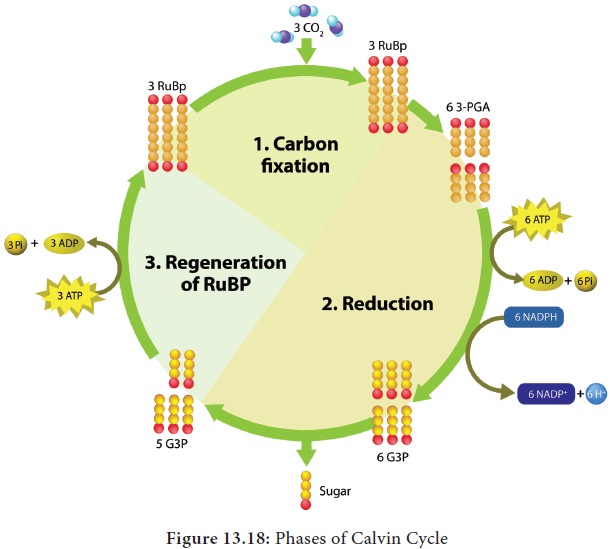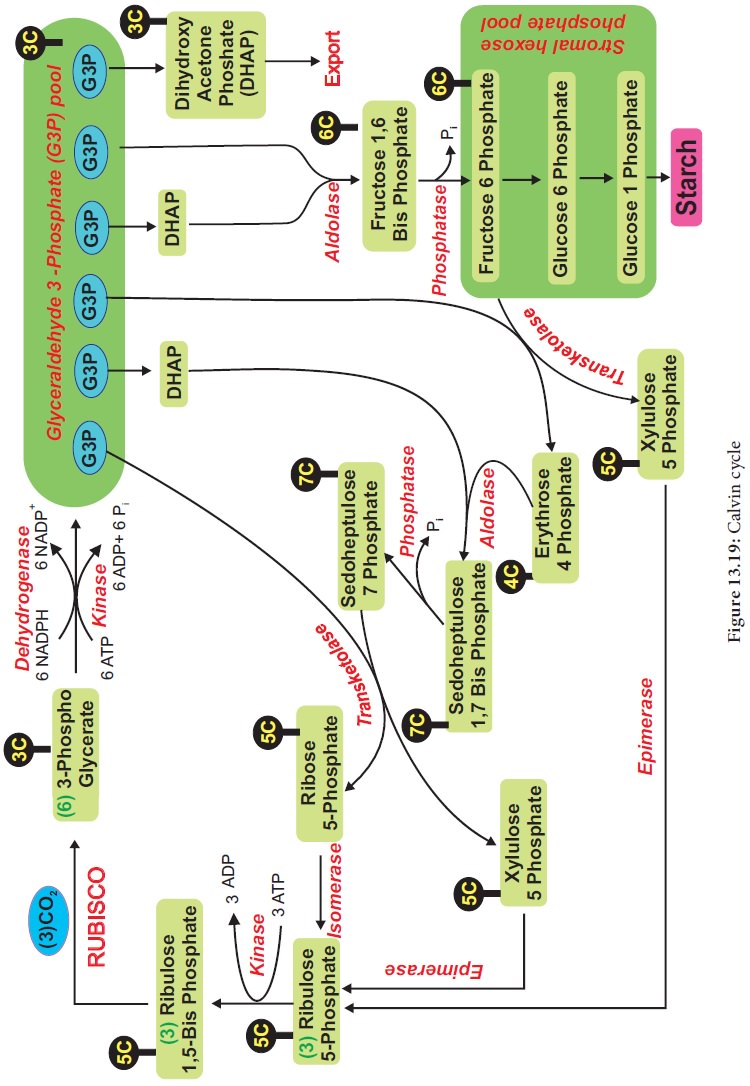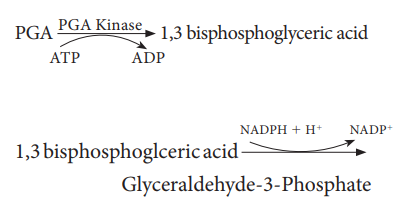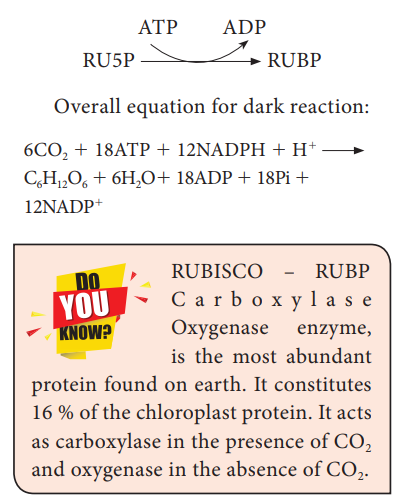Chapter: 11th Botany : Chapter 13 : Photosynthesis
Dark Reaction or C3 Cycle or Biosynthetic Phase or Photosynthetic Carbon Reduction (PCR) Cycle
Dark Reaction or C3 Cycle or
Biosynthetic Phase or Photosynthetic Carbon Reduction (PCR) Cycle
Biosynthetic
phase of photosynthesis utilises assimilatory powers(ATP and NADPH + H+)
produced during light reaction are used to fix and reduce carbon dioxide into
carbohydrates. This reaction does not require light. Therefore, it is named
Dark reaction. Ribulose 1,5 bisphosphate (RUBP) act as acceptor molecule of
carbon dioxide and fix the CO2 by RUBISCO enzyme. The first product
of the pathway is a 3- carbon compound (Phospho Glyceric Acid) and so it is
also called as C3 Cycle. It takes place in the stroma of the
chloroplast. M. Melvin Calvin, A.A.
Benson and their co-workers in
the year 1957 found this path way of carbon fixation. Melvin Calvin was awarded
Nobel Prize for this in 1961 and this pathway named after the discoverers as Calvin-Benson Cycle. Dark reaction is
temperature dependent and so it is also called thermo-chemical reaction.
Dark
reaction consists of three phases: (Figure 13.18).

1.
Carboxylation (fixation)
2.
Reduction (Glycolytic Reversal)
3.
Regeneration
Phase 1- Carboxylation (Fixation)
The acceptor
molecule Ribulose 1,5 Bisphosphate (RUBP) a 5 carbon compound with the help of
RUBP carboxylase oxygenase (RUBISCO) enzyme accepts one molecule of carbon
dioxide to form an unstable 6 carbon compound. This 6C compound is broken down
into two molecules of 3-carbon compound phospho glyceric acid (PGA) (Figure
13.19).


Phase 2 – Glycolytic Reversal / Reduction
Phospho
glyceric acid is phosphorylated by ATP and produces 1,3 bis phospho glyceric
acid by PGA kinase. 1,3 bis phospho glyceric acid is reduced to glyceraldehyde
3 Phosphate (G-3-P) by using the reducing power NADPH + H+. Glyceraldehyde 3
phosphate is converted into its isomeric form di hydroxy acetone phosphate
(DHAP).

Phase 3 – Regeneration
Regeneration
of RUBP involves the formation of several intermediate compounds of 6-carbon,
5-carbon,4- carbon and 7 - carbon skeleton. Fixation of one carbon dioxide
requires 3 ATPs and 2 NADPH + H+, and for the fixation of 6 CO2
requires 18 ATPs and 12 NADPH + H+ during C3 cycle. One 6
carbon compound is the net gain to form hexose sugar.

Related Topics